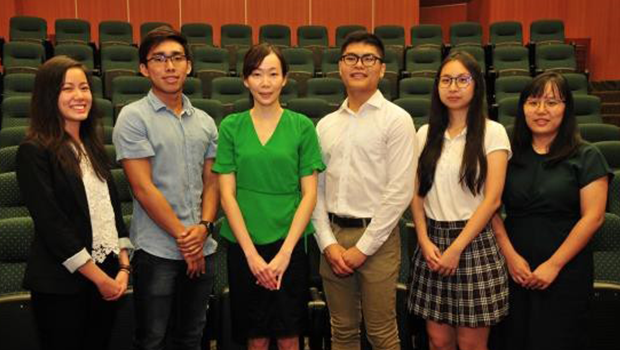
Artificial Intelligence (AI)-derived genomic fingerprint of a tumour, termed the 500-gene classifier was used specifically in this study to analyse the molecular composition of a common brain tumour known as glioblastoma multiforme.
A team of researchers from Duke-NUS Medical School, National Cancer Centre Singapore and the Institute of Cell and Molecular Biology A*STAR, show that tumour has its genomic fingerprint. The team has developed an AI-derived genomic fingerprint, termed the 500-gene-classifier that robustly subtypes glioblastoma brain tumours among Caucasians, Koreans and Chinese patients. This has implications for improved clinical care and treatment for those suffering from the disease.
Glioblastoma multiforme, the most common malignant brain tumour among adults in Singapore and worldwide, is lethal. Only about 20 per cent of patients live beyond five years after being diagnosed with this tumour.
Utilising AI, which rigorously runs thousands of repeated simulations in previous cohorts, the research group derived a 500-gene-classifer that robustly identifies the molecular subtype of each glioblastoma patient tumour, or in simpler terms, the tumour’s genomic fingerprint. This 500-gene-classifier found three main genomic fingerprints for glioblastoma, and consistently surpasses the original 840-gene classifier reported in 2008 (Verhaak et al.). The previous 840-gene classifier led researchers to identify four subtypes of glioblastoma in 2008, based on a large Caucasian cohort of glioblastoma patients in the United States, but is less effective in classifying the current larger Caucasian-based cohorts from the United States, profiled on a variety of genomic platforms. The 500-gene-classifier, published earlier this year, has proved to be a powerful resource for subtyping glioblastoma tumours among Chinese, Koreans and Caucasians patients on a variety of genomic platforms, and has surfaced preliminary evidence that tumours of certain glioblastoma subtypes respond differently to radiation therapy versus chemotherapy in mouse models.
High-throughput genomic platforms developed over the last 2 decades have enabled tens of thousands of genes to be analysed within a single experiment in each patient tumour sample for cancer patients. The vast amounts of genes are used to classify each patient tumour into high-resolution molecular subtypes or the genomic fingerprint of the tumour.
“Data science research may not have the novelty appeal for many young researchers but the impact of such work for patient-driven clinical trials has far-reaching implications for future treatment and clinical care, and should not be overlooked,” said Assistant Professor Wan-Yee Teo, lead Principal Investigator for this study, Duke-NUS Medical School.
“The large amount of genomic data should also be reviewed from time to time to align new clinical questions and revise older classifiers. This will benefit smaller and scattered international research groups that may be using these gene-classifiers on a variety of profiling platforms. It is also crucial that these updated gene-classifiers are also made available to all researchers,” added Assistant Professor Teo.
Assistant Professor Teo hopes to inspire more individuals from our younger generation to join the field of biomedical research in the area on data science. Her team comprising young researchers (pictured below), and her research combines genomic methodologies and mouse models to study the complex regulation in the developmental biology of brain tumours.
Assistant Professor Wan-Yee Teo (third from left) is a national clinician-scientist and a paediatric neuro-oncologist trained in the US. She has been awarded the Research Fellowship Training Award, Transition Award, and Clinician-Scientist Award by the National Medical Research Council, Ministry of Health, Singapore. She is a physician with KK Women’s and Children’s Hospital. Her laboratory unit of Pediatric Brain Tumor Research Office, SingHealth-Duke-NUS Academic Medical Center is competitively funded, and based at National Cancer Centre Singapore.
The current published work did not require funding support.













 Get it on Google Play
Get it on Google Play